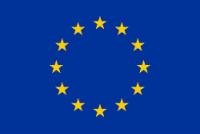Collective behaviors are widespread in the animal kingdom, from mesmerizing starling flocks to a Sunday soccer match or a playful group of dogs at the park. These group activities unfold within a fixed spatial context where animals dynamically move and interact in structured ways. While we have a good understanding of how our brains navigate in static environments, the neural basis of dynamic group behaviors remains largely unexplored.
Indeed, studying complex spatial behaviors involving multiple animals is exceptionally challenging and differs from the conventional reductionistic approach. HFSP supported the young scientist Angelo Forli with an HFSP Long-Term Fellowship, who aimed to address this question in collaboration with Michael Yartsev at UC Berkeley, USA.
The research intended to leverage Egyptian fruit bats' remarkable social and spatial behaviors to investigate how the hippocampus, a brain region responsible for memory and spatial navigation, represents intricate social networks. Using advanced techniques for recording behavior and neural activity in small groups of free-flying bats within a large laboratory setting, Forli and Yartsev made several unexpected findings. First, the bats spontaneously organized themselves into highly structured and elegant behaviors, demonstrating stable social and spatial preferences. Furthermore, hippocampal cell activity not only reflected the spatial behavior of the recorded bat, as expected, but it was also significantly influenced by the behaviors of specific other bats. Lastly, decoding the activity from small groups of cells allowed the prediction of social and spatial aspects of bat behavior. This suggests that different brain regions could potentially use hippocampal activity to coordinate decision-making and movements in collective settings.
This research sheds light on the rich brain representation of naturally occurring spatial behaviors within animal groups, thereby contributing to our understanding of complex collective behaviors and their neural substrates.


































